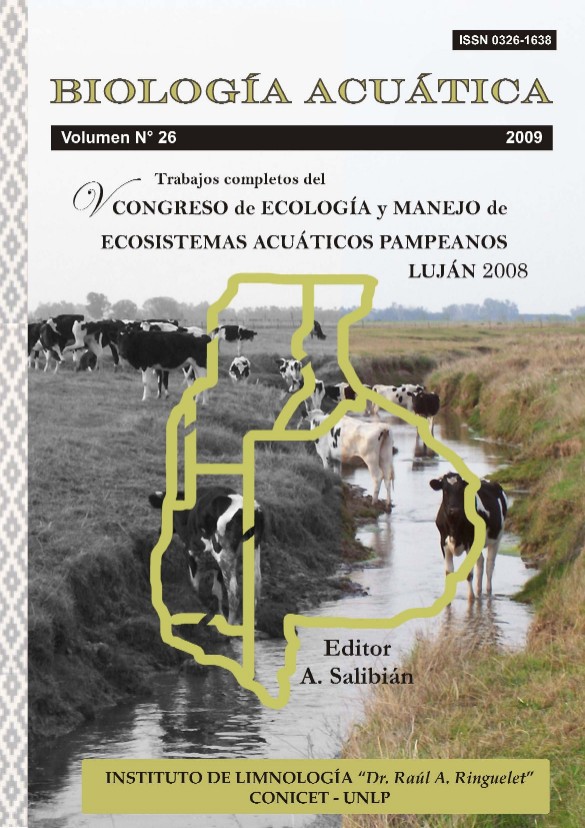Análisis preliminar del riesgo sanitario por metales pesados en aguas superficiales del partido de Tres Arroyos sujetas a uso recreativo
Palabras clave:
aguas recreativas, análisis de riesgo sanitario, metales pesadosResumen
Surveys for water quality in Tres Arroyos County show the presence of heavy metals in several locations. Considering that water of Tres Arroyos and Claromecó streams is used for recreational purposes during summer, the aim of this paper is to analyze if heavy metals contents (Al, As, Cr, Cu, Hg Mn, Pb y Zn) cause a risk for swimmers. The analysis was made by a recreational health risk assessment (HRA) based on the USEPA probabilistic model including accidental intake and direct skin contact with water in nine points of the basin. The HRA was aggregated (simultaneous exposure to both contact ways) and cumulative (simultaneous exposure to all metals), for non carcinogenic effects, and was made using an additive model. The theoretical individual exposed was a ten years old child (32 kg), that, on average, takes 20 baths/year, 1 hour long each, during 7 years. The results show that the higher value of aggregated and cumulative risk was very low, 7.82E-02, at the Claromecó stream location. So, bathing use of the streams does not represent an adverse health risk considering the assumed conditions of exposure for both types of exposure and all substances simultaneously.






















